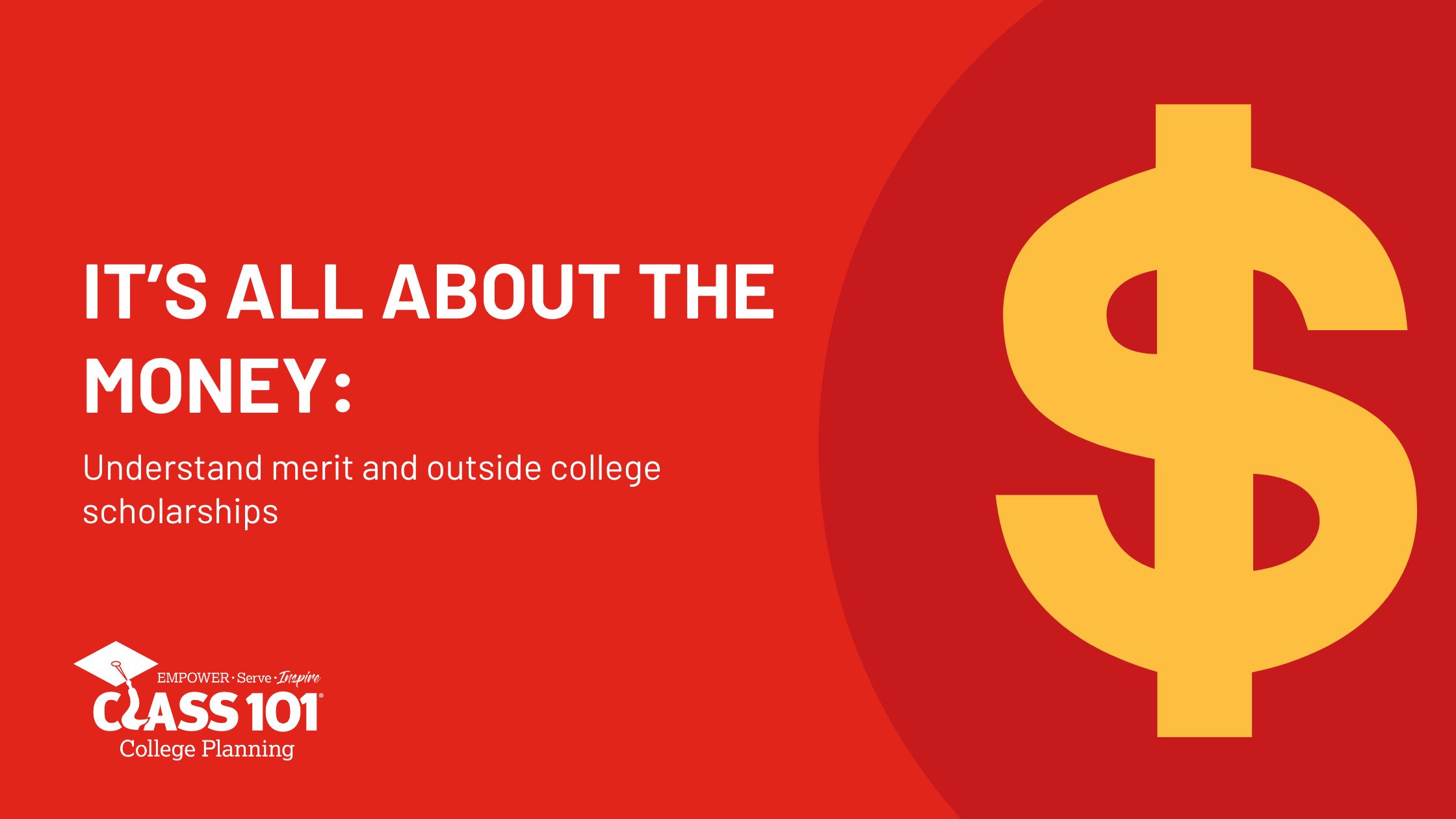January 23, 2023

College is expensive—that much is obvious. According to the Education Data Initiative, the average cost for a student to go to a four-year college out of state is $43,421 per year. And each year the cost of tuition for public and private colleges goes up.
Faced with these mounting costs, scholarships and financial aid is essential to make college affordable. However, many families can be confused by the options available to them. How can they make sure their students qualify? What opportunities are available?
In this blog, we’ll explore the two main sources of scholarships for students: merit-based and outside scholarships. We’ll explain what these opportunities entail and how you might earn the money your student needs for college.
Merit-Based Scholarships
A merit-based scholarship is what most people think about when they think about scholarships. They are, as the name suggests, scholarships that universities give out to attract high-achieving students. People can earn these scholarships with strong test scores or a high GPA or class rank. Certain universities may also reward students for participating in significant activities in their high school or community, especially if they relate to a specific program.
At Class 101, we consider these types of scholarships to be “predictable” scholarships. Almost all schools offer these scholarships and will often publish the criteria for these scholarships on their website, making it easy to assess whether or not a student is able to qualify. While some are competitive, most merit-based scholarships can be achieved by a student in the course of their normal class work—not requiring additional essays or applications beyond what they might submit on the Common App.
Students who seek college counseling early from a Class 101 advisor can get the help they need to qualify for these scholarships when it comes time to apply to college.
Outside Scholarships
Outside scholarships, also known as private scholarships, are those scholarships granted by institutions other than a university or the U.S. federal government. Offered primarily by foundations, businesses, and advocacy organizations, these scholarships exist for the stated purpose of advancing an organizational mission.
For the Diabetes Scholars Foundation, for example, their Jay Franke Scholarship is meant to empower students living with diabetes by making college affordable. The Coca-Cola Company’s Coca-Cola Scholars Program Scholarship Program awards up to $20,000 to high school students who demonstrate exceptional leadership and commitment to their communities in ways consistent with the company’s values.
We consider these types of scholarships “unpredictable” sources of money. They are offered to a very small number of students, often on a competitive basis. Students are often required to submit specific applications for these scholarships—applications that require additional essays and interviews.
As all this suggests, outside applications can be time intensive in a way that merit scholarships rarely are. However, students who pursue Class 101 college advising by the start of their senior year or sooner can start working on applications early. This can reduce strain and allow them to apply for multiple scholarships, increasing their odds that they receive at least one to help them through college.
***
Of course, these are only a few of the options available to students. There are also athletic scholarships and creative scholarships that students can pursue depending on their skills and their colleges of interest.
We encourage anyone interested in pursuing these scholarships or the scholarships discussed in this blog to contact our Class 101 experts here in Brandon for more information. Our advisors are happy to schedule a meeting with you to make sure that the college application process is as easy and affordable as possible.

March 12, 2025
8-10. That’s the number of college visits we recommend for each Class 101 student. After advising thousands of high school students through the college selection process, we’ve seen many instances where students with a dream school in mind visit that campus, only to realize that college is nothing like they expected it to be. While […]
Read More >
February 21, 2025
With the cost of college rising, one of the biggest ways Class 101 supports families in their college planning process is by helping them understand and work through financial aid offers. We want to stress that while receiving a financial aid package from a private college or university is an important step toward making higher […]
Read More >
January 13, 2025
ge is an exciting milestone, but it can also bring uncertainty. One possible outcome is receiving a deferral letter from a university. While it’s not the decision most students hope for, a deferral isn’t a “no” — it’s an opportunity.Here’s what a deferral means, why universities issue them, and how you can turn it into […]
Read More >